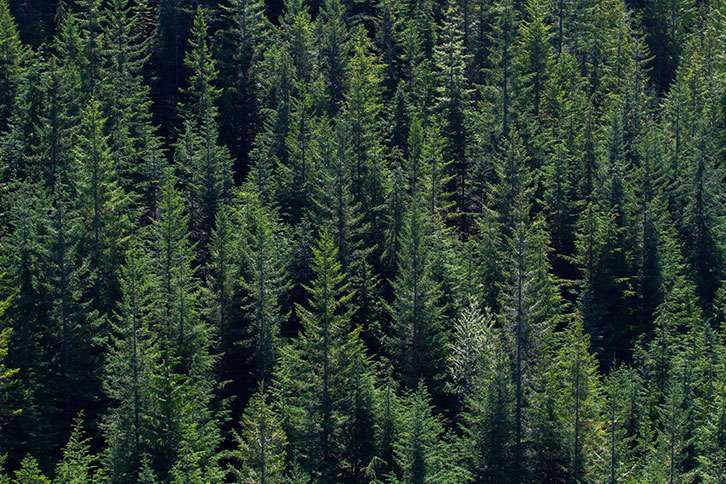
Customers often ask which is the best wood species for a log home. There are many good species and most are appropriate for use in log homes and timber homes. Selection of the species often comes down to which one you like to look at most. However, over the last 27 years, PrecisionCraft Log & Timber Homes has found that one wood species seems to perform better when it comes to log homes and timber homes – West Coast Douglas Fir.
Start Your Dream Home Today with PrecisionCraft!
West Coast Douglas Fir is grown on the Pacific side of the Cascade Mountains in Oregon, Washington, and British Columbia. Douglas Fir growing east of the Cascades is technically the same species. However, the high moisture and soil conditions of the Pacific Coastal Region produces much higher quality wood fiber than its inland cousin. The grain is straight with fewer knots and defect. The color of Douglas Fir varies from a yellow/white sapwood to a glowing brownish red heart wood. In addition, it takes stain and finish very well.

Ask any framer that has been in the business for a while. The old salts will tell you about the good old days when most framing lumber was West Coast Douglas Fir. It was straight, true, and you could count on the quality. Today, old growth West Coast Douglas Fir is protected and too valuable to use in standard framing lumber. Most framing lumber uses other lower quality species. This reserves the high-quality Douglas Fir for timbers and finish boards.
Douglas Fir has the highest structural qualities of all of the softwoods. It is typically the species of choice by architects and engineers in structural applications. Most roof and truss members require the strength of Douglas Fir because most timber connections are structural and the timbers are typically load bearing. Using Douglas Fir in a timber frame structure gives the designer and engineer much more flexibility.
PrecisionCraft’s species of choice for log homes is West Coast Douglas Fir. However, they can fabricate log and timber structures from other species, and the final decision is always up to you.
